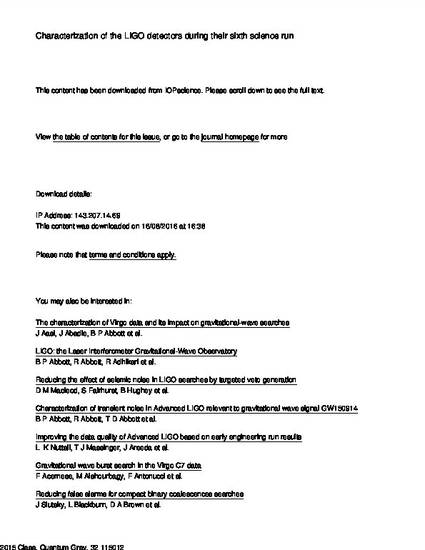
Article
Characterization of the LIGO detectors during their sixth science run
Faculty Publications
Document Type
Article
Publication Date
1-1-2015
Keywords
- LIGO detectors
Disciplines
Abstract
In 2009–2010, the Laser Interferometer Gravitational-Wave Observatory (LIGO) operated together with international partners Virgo and GEO600 as a network to search for gravitational waves (GWs) of astrophysical origin. The sensitivity of these detectors was limited by a combination of noise sources inherent to the instrumental design and its environment, often localized in time or frequency, that couple into the GW readout. Here we review the performance of the LIGO instruments during this epoch, the work done to characterize the detectors and their data, and the effect that transient and continuous noise artefacts have on the sensitivity of LIGO to a variety of astrophysical sources.
Journal Title
Classical and Quantum Gravity
First Department
Physics
Acknowledgements
Retrieved August 16, 2016 from http://iopscience.iop.org/article/10.1088/0264-9381/32/11/115012/meta
Citation Information
Tiffany Summerscales and LIGO Collaboration. "Characterization of the LIGO detectors during their sixth science run" Vol. 32 Iss. 11 (2015) p. 115012 Available at: http://works.bepress.com/tiffany_summerscales/17/
